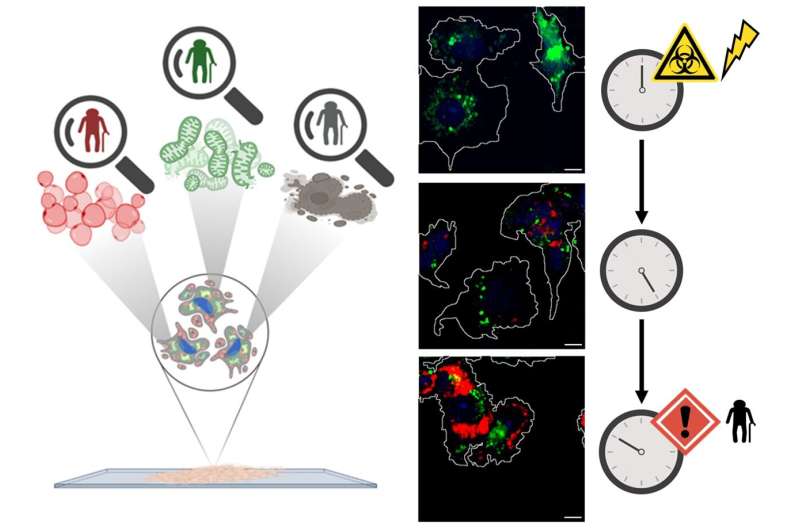This article has been reviewed according to Science X's editorial process and policies. Editors have highlighted the following attributes while ensuring the content's credibility:
fact-checked
peer-reviewed publication
trusted source
proofread
Study sheds light on one of the still poorly understood aspects of cancer

A new study published in Science Advances has investigated one of the still poorly understood aspects of cancer, therapy-induced senescence in tumor cells. The study, the result of collaboration between researchers from Politecnico di Milano, Johns Hopkins University in Baltimore, the National Cancer Institute in Milan, and the National Research Council, expands our understanding of cancer biology and paves the way for future therapeutic advancements.
Cancer continues to be a global health threat, responsible for millions of lives lost each year. Standard cancer treatments like chemotherapy and radiation therapy remain the primary methods for treating neoplasms. However, a small percentage of treated tumor cells, called "therapy-induced senescent" (TIS) cells, exhibit resistance to conventional therapies, leading to tumor quiescence and ultimately, recurrence.
The team worked to uncover the biological mechanisms behind the formation of TIS cells. Researchers utilized advanced optical microscopy techniques, combining three-dimensional holograms of tumor cells with ultra-short pulses of laser light, with an incredibly brief duration of just one millionth of one millionth of a second, to identify biomolecules based on their characteristic vibrations.
These highly technological tools allowed them to explore both the chemical and morphological aspects of TIS cells in human tumors. Importantly, this study was conducted without the use of invasive techniques, preserving the natural state of the cells.
The results are very promising. The research group was able to distinguish key features of TIS cells in human tumor cells, shedding light on their early manifestation. These properties include the reorganization of the mitochondrial network, overproduction of lipids, cell flattening, and enlargement. By analyzing a considerable number of cells, researchers established a clear timeline for the development of these distinctive signs.
Arianna Bresci, the first author of the study and a doctoral student in the Department of Physics at Politecnico di Milano, commented, "This result is a clear example of how cutting-edge technologies, multidisciplinary expertise, and strong international collaborations are crucial in addressing the most pressing biological questions, such as the early reaction mechanisms of tumor cells to anticancer therapies."
Dario Polli, associate professor at the Department of Physics at Politecnico di Milano and the coordinator of the study, emphasized, "Our findings provide important insights into the complex world of TIS in human tumor cells. In our laboratory at Politecnico di Milano, we have developed a new non-invasive laser microscope that has allowed us to understand the initial stages of this phenomenon."
The study offers many avenues for the future of cancer research, opening new paths for investigation. The research team envisions broader applications in the development of personalized treatments using patient-derived tumor samples and the potential to refine current screening protocols for oncological therapy. The discoveries made by this research team bring us closer to understanding the complexities of cancer and offer hope for more effective therapies in the future.
More information: Arianna Bresci et al, Noninvasive morpho-molecular imaging reveals early therapy-induced senescence in human cancer cells, Science Advances (2023). DOI: 10.1126/sciadv.adg6231



















